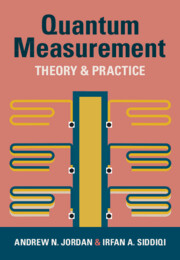146 results
Evolutionary map of the universe (EMU): Observations of filamentary structures in the Abell S1136 galaxy cluster
-
- Journal:
- Publications of the Astronomical Society of Australia / Volume 41 / 2024
- Published online by Cambridge University Press:
- 23 May 2024, e050
-
- Article
-
- You have access
- Open access
- HTML
- Export citation
The ENACT network is acting on housing instability and the unhoused using the open health natural language processing toolkit
-
- Journal:
- Journal of Clinical and Translational Science / Volume 8 / Issue 1 / 2024
- Published online by Cambridge University Press:
- 16 May 2024, e98
-
- Article
-
- You have access
- Open access
- HTML
- Export citation
Exploring Arbitrariness Objections to Time Biases
-
- Journal:
- Journal of the American Philosophical Association , First View
- Published online by Cambridge University Press:
- 07 March 2024, pp. 1-27
-
- Article
-
- You have access
- Open access
- HTML
- Export citation
List of Symbols
-
- Book:
- Quantum Measurement
- Published online:
- 10 May 2024
- Print publication:
- 15 February 2024, pp xv-xviii
-
- Chapter
- Export citation
Preface
-
- Book:
- Quantum Measurement
- Published online:
- 10 May 2024
- Print publication:
- 15 February 2024, pp xi-xiii
-
- Chapter
- Export citation
Dedication
-
- Book:
- Quantum Measurement
- Published online:
- 10 May 2024
- Print publication:
- 15 February 2024, pp v-vi
-
- Chapter
- Export citation
References
-
- Book:
- Quantum Measurement
- Published online:
- 10 May 2024
- Print publication:
- 15 February 2024, pp 249-260
-
- Chapter
- Export citation
2 - Projective Measurement
-
- Book:
- Quantum Measurement
- Published online:
- 10 May 2024
- Print publication:
- 15 February 2024, pp 30-45
-
- Chapter
- Export citation
10 - Feedback and Control
-
- Book:
- Quantum Measurement
- Published online:
- 10 May 2024
- Print publication:
- 15 February 2024, pp 218-232
-
- Chapter
- Export citation
3 - Generalized Measurem
-
- Book:
- Quantum Measurement
- Published online:
- 10 May 2024
- Print publication:
- 15 February 2024, pp 46-63
-
- Chapter
- Export citation
11 - Epilogue: What Does It All Mean?
-
- Book:
- Quantum Measurement
- Published online:
- 10 May 2024
- Print publication:
- 15 February 2024, pp 233-238
-
- Chapter
- Export citation
4 - Weak Measurement
-
- Book:
- Quantum Measurement
- Published online:
- 10 May 2024
- Print publication:
- 15 February 2024, pp 64-89
-
- Chapter
- Export citation
7 - Linear Detectors
-
- Book:
- Quantum Measurement
- Published online:
- 10 May 2024
- Print publication:
- 15 February 2024, pp 153-168
-
- Chapter
- Export citation

Quantum Measurement
- Theory and Practice
-
- Published online:
- 10 May 2024
- Print publication:
- 15 February 2024
Appendix A - Review of Classical Probability Theory
-
- Book:
- Quantum Measurement
- Published online:
- 10 May 2024
- Print publication:
- 15 February 2024, pp 239-242
-
- Chapter
- Export citation
Frontmatter
-
- Book:
- Quantum Measurement
- Published online:
- 10 May 2024
- Print publication:
- 15 February 2024, pp i-iv
-
- Chapter
- Export citation
5 - Continuous Measurement: Diffusive Case
-
- Book:
- Quantum Measurement
- Published online:
- 10 May 2024
- Print publication:
- 15 February 2024, pp 90-128
-
- Chapter
- Export citation
Acknowledgments
-
- Book:
- Quantum Measurement
- Published online:
- 10 May 2024
- Print publication:
- 15 February 2024, pp xiv-xiv
-
- Chapter
- Export citation
Index
-
- Book:
- Quantum Measurement
- Published online:
- 10 May 2024
- Print publication:
- 15 February 2024, pp 261-264
-
- Chapter
- Export citation
8 - Quantum Amplification
-
- Book:
- Quantum Measurement
- Published online:
- 10 May 2024
- Print publication:
- 15 February 2024, pp 169-185
-
- Chapter
- Export citation


